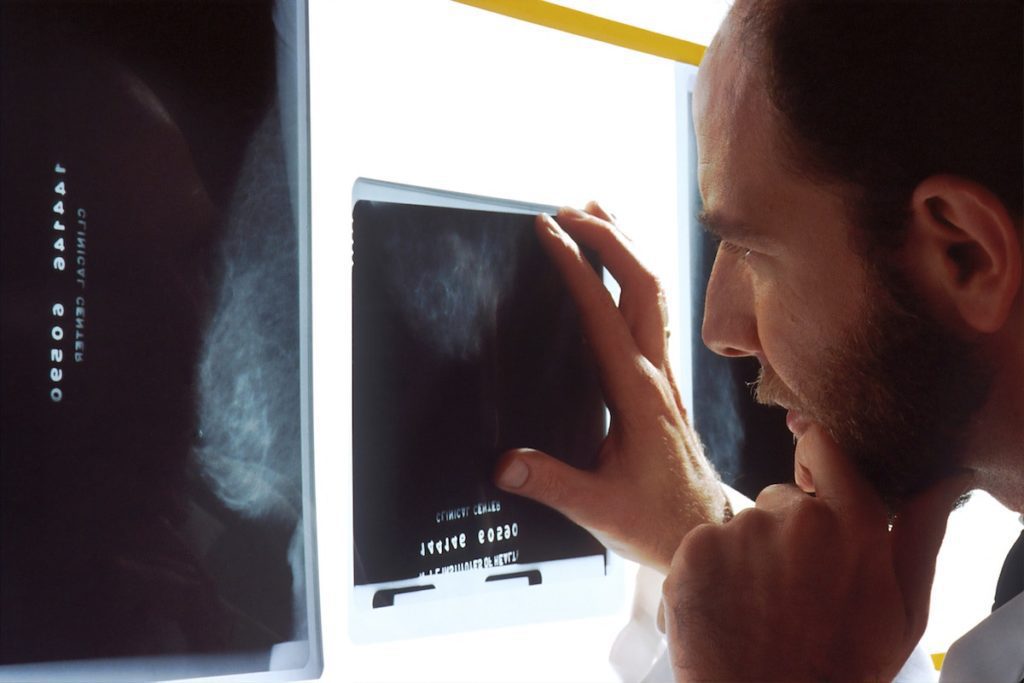Medical imaging encompasses a wide range of radiological and ultrasound technologies that can be extremely useful in the identification and diagnosis of disease. To better understand what these various types of medical imaging are used for and how they may be of assistance to your personal wellbeing, we’ve written this helpful blog.
For more information on CT scans, MRIs, mammograms, and more, please reach out to the clinical professionals at Touchstone Medical Imaging today.
What is Medical Imaging?
Medical imaging refers to the technological machines and processes used to create visual images of the body, usually on an internal or below-the-skin level. It may involve radiography, such as X-rays, as well as ultrasound technology, which works by way of high-powered sound wave reflection.
Doctors can specialize in medical imaging. Those who do are referred to as radiologists or imaging technologists.
Medical imaging is extremely important and useful because it shows what is going on inside the body and can help identify or diagnose conditions before symptoms appear, as well as determine what may be causing them if they are already apparent.
What are the options for medical imaging?
Options for medical imaging are diverse and variable depending on the condition you or your medical provider may believe you are dealing with. The most common and reliable forms of medical imaging technology are:
- X-rays
- CT scans
- Ultrasounds
- Mammography
- MRI
Below, each of these is discussed in more detail.
X-Rays
X-rays are a form of electromagnetic radiation that is used to image areas of dense matter in the body, such as bones and tumors. It’s a good option for noninvasive, efficient and painless imagery.
X-rays can be used to diagnose a number of diseases, such as cancer or viral infections, as well as injuries like broken bones.
With this technology, there is a slightly increased risk of cancer from the radiation. However, because most people get these treatments done so infrequently, the increased risk is generally minimal and not considered a viable threat.
CT Scans
CT stands for computed tomography, which means a computerized x-ray imaging system or machine projects narrow beams of the rays and rotates them around the body. With the use of these multiple X-rays, a more detailed, cross-sectional image of the body can be produced.
CT scans are a moderately low-risk procedure with great visualization capabilities. They’re generally not prescribed unless a standard x-ray image has proven insufficient, or a previously treated disease or tumor has re-emerged. And thanks to the cross-sectional imaging, more detailed layers of the body can be viewed and thus more complex internal structures can be assessed.
Very rarely, a CT scan may require the use of anesthetic, but in general, the only major risk of this medical imaging technology is a slightly greater increased risk of cancer than a singular x-ray beam.
MRI
Magnetic resonance imaging, abbreviated as MRI, involves the use of magnetic fields and radio waves to produce detailed images of various body structures, including bones, ligaments, soft tissues, organs, and cartilage.
In addition to much more detailed images, MRI does not use ionizing radiation, which is the kind of radiation exposure found in X-rays and CT scans. It is non-invasive and painless, too.
The drawbacks of MRI are more unpleasant in the short-term than risky in the long term. The procedure can be loud and noisy, and complications from movement can produce a sub-par image. However, with proper stress control and possibly anesthesia, MRI almost always yields an insightful and accurate image.
Ultrasounds
With the use of high-frequency sound waves, ultrasounds are an incredible medical imaging technology that produces moving images onto a screen, showing the movements and processes going on inside the body in real-time.
Ultrasounds can be used to diagnose a number of different conditions including the abdomen, breasts, kidneys, joints, and more. It’s also commonly used to monitor the health of a developing baby during the mother’s pregnancy.
Although the physical complications of ultrasounds are very low, the quality of the image depends a great deal on the skill of the imaging technician. In some cases, such as the assessment of the vagina or esophagus, the placement of a small probe may be necessary. Most of the time, ultrasounds are non-invasive and almost always painless.
Who should I talk to about medical imaging?
Radiologists and medical imaging technicians are the best professionals to talk to. If you have any concerns about your lungs, bones, soft tissue, or internal organs, an imaging specialist at Touchstone Medical Imaging is ready to assist you and, if necessary, to get you the correct treatment.
Our primary services include mammography, MRI, CT scans, X-rays, ultrasound, and more. Explore how we can help by visiting our official site today.


